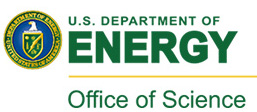 Our research is focused on design of energy-efficient and high-performance integrated Communication, Computing, and Signal Processing systems. Our aim is to find efficient topological representations of advanced Signal Processing and Coding schemes to address the aggressive demands of today industry. Our research covers a very wide range of applications, such as bio-medical systems, energy harvesting, ultra-low power mixed-signal integrated circuits, extremely high-speed communication links, among others. A short summary can be found here: (1) General Vision and Project, and (2) More Detailed Description. Here are few examples for our research activities:
Our research is focused on design of energy-efficient and high-performance integrated Communication, Computing, and Signal Processing systems. Our aim is to find efficient topological representations of advanced Signal Processing and Coding schemes to address the aggressive demands of today industry. Our research covers a very wide range of applications, such as bio-medical systems, energy harvesting, ultra-low power mixed-signal integrated circuits, extremely high-speed communication links, among others. A short summary can be found here: (1) General Vision and Project, and (2) More Detailed Description. Here are few examples for our research activities:
Energy-Efficient Digital Radio
High-speed wireless communication is key in many modern applications. 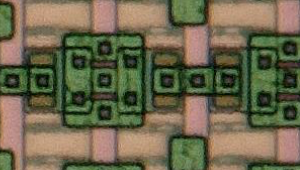 In addition to the conventional radio frequency communications, that now requires to provide wider bandwidth, such as in 5G (and 6G), there are many emerging applications such as health monitoring, imaging, vehicle-to-vehicle radar, that require high-speed and reconfigurable wireless communications. LCAS is leading several projects in the field of high-speed communication circuits, including ultra low phase noise frequency synthesizers, power amplifiers, and data converters. Our current research focus is on developing what is called "digital radio," highlighting the fact that in addition to bandwidth, reconfigurability is a key.
In addition to the conventional radio frequency communications, that now requires to provide wider bandwidth, such as in 5G (and 6G), there are many emerging applications such as health monitoring, imaging, vehicle-to-vehicle radar, that require high-speed and reconfigurable wireless communications. LCAS is leading several projects in the field of high-speed communication circuits, including ultra low phase noise frequency synthesizers, power amplifiers, and data converters. Our current research focus is on developing what is called "digital radio," highlighting the fact that in addition to bandwidth, reconfigurability is a key.
Narrow-Band Wireless IoT
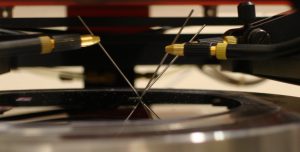 New wireless applications are emerging to answer the growing demand for high-speed and secure data transfer for applications such as Internet-of-Things. We are looking into advanced techniques to answer different challenges in such systems: energy consumption and security. Discrete-time RF front-end, wide-band and low-jitter synthesizer design, and power-efficient digital power amplifier design is part of this work. Also, we are working on novel techniques to improve hardware security of IoT devices.
New wireless applications are emerging to answer the growing demand for high-speed and secure data transfer for applications such as Internet-of-Things. We are looking into advanced techniques to answer different challenges in such systems: energy consumption and security. Discrete-time RF front-end, wide-band and low-jitter synthesizer design, and power-efficient digital power amplifier design is part of this work. Also, we are working on novel techniques to improve hardware security of IoT devices.
Extreme Low Power - ULP - Signal Processing
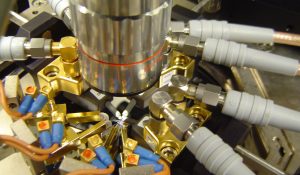 The goal of this research topic is to find out about what are the theoretical and physical limits to reduce energy or power consumption of particular integrated systems. In many cases, the target performance puts a lower limit on power dissipation. There are many emerging applications in which speed is not the primary concern. In such cases, the key question is if there are ways to bring down the consumption down to somewhere close to zero? We are also trying to explore properties of devices and circuits operating at such low consumption levels in order to better understand the design tradeoffs. Having a wide range of applications, such ultra low power integrated circuits are key components in modern biomedical and sensing systems [Find more info here].
The goal of this research topic is to find out about what are the theoretical and physical limits to reduce energy or power consumption of particular integrated systems. In many cases, the target performance puts a lower limit on power dissipation. There are many emerging applications in which speed is not the primary concern. In such cases, the key question is if there are ways to bring down the consumption down to somewhere close to zero? We are also trying to explore properties of devices and circuits operating at such low consumption levels in order to better understand the design tradeoffs. Having a wide range of applications, such ultra low power integrated circuits are key components in modern biomedical and sensing systems [Find more info here].
Energy-efficient Massive Data Movement
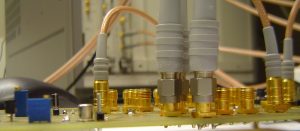 Though energy efficiency and data rate of the existing serial data transceivers has been improved considerably, yet there are many emerging applications that require much faster data rate at lower energy consumption levels. To further improve efficiency and performance of such systems, advance signal processing techniques implemented by innovative circuit topologies will be essential
Though energy efficiency and data rate of the existing serial data transceivers has been improved considerably, yet there are many emerging applications that require much faster data rate at lower energy consumption levels. To further improve efficiency and performance of such systems, advance signal processing techniques implemented by innovative circuit topologies will be essential
Low Noise and High Performance Frequency Synthesizers
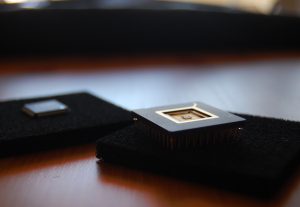 Low noise frequency synthesizers and CDRs are key building blocks in modern Computing and Communication systems. The goal of this study to find out new approaches to implement such systems with higher performance and lower power dissipation. We are looking into new optimization methods combined with innovative architectures to address this problem.
Low noise frequency synthesizers and CDRs are key building blocks in modern Computing and Communication systems. The goal of this study to find out new approaches to implement such systems with higher performance and lower power dissipation. We are looking into new optimization methods combined with innovative architectures to address this problem.
Ultra-Low Power Bio-Interface Circuits
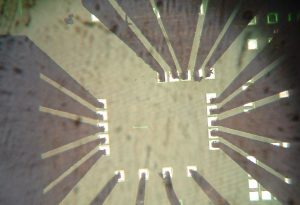 One of the main interests of LCAS group is on design of ultra-low power interface circuits for sensor networks and bio-medical applications. We are developing sub-nW systems that can harvest power and stay functional for a very long time, without any need to batteries. Our team investigates different design techniques to improve efficiency of the energy harvesting system and at the same time lower consumption of key circuits such as amplifiers, data converters, and wireless transmitters.
One of the main interests of LCAS group is on design of ultra-low power interface circuits for sensor networks and bio-medical applications. We are developing sub-nW systems that can harvest power and stay functional for a very long time, without any need to batteries. Our team investigates different design techniques to improve efficiency of the energy harvesting system and at the same time lower consumption of key circuits such as amplifiers, data converters, and wireless transmitters.
Methodological Analog Circuit Design
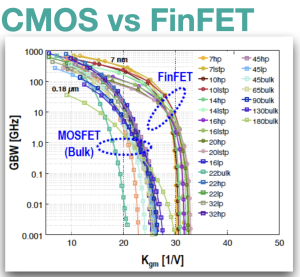
Optimal analog circuit design for a give spec is considered a nontrivial problem. Topological complexities, device model, and layout parasitic effects, all in all, make the design of analog circuits time consuming and expensive. The LCAS team is working on a novel and analytical design approach that provides design insight and opens the doors toward new design methodologies [YouTube]. Called C/ID, the proposed methodology can be used to optimally design analog circuits for speed, gain, and noise performance.
Senior Projects
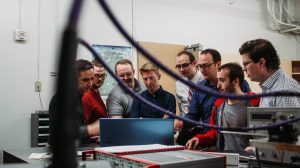 Every year, we offer several projects for students who want to pursue their career in the field of Integrated Circuit design (digital, analog, communications, etc). Few project descriptions are listed here:
Every year, we offer several projects for students who want to pursue their career in the field of Integrated Circuit design (digital, analog, communications, etc). Few project descriptions are listed here:
Projects:
Previous years' Projects:
- High-Speed Analog to Digital Converter for Wireless 5G Systems 2020_high_speed_adc
- High-Speed Digital to Analog Converter for Wireless 5G Systems
- Hardware Security: Circuit& System Design and Modeling 2020_hardwar_security
- Hardware for Machine Learning: Circuit Design and Modeling 2020_machine_learning
- Chip-to-Chip Optical Communications 2020_optical_circuits
- Master DUT Test Board Design 2021_control_board
- Multi-Lane Transmission Line Board for High-Speed Communication 2021_mtline_pcb
- Embedded system for sensor network, for applications such as mega-infrastructure monitoring systems
- Software tool for estimating power consumption of integrated circuits
Equipment and Facilities:
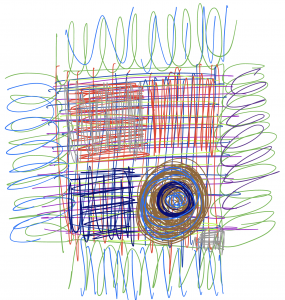 LCAS has access to the cutting-edge test and experimental facilities provided by Utah Nanofab. In addition to a rich set of laboratories and equipment, Electrical Characteristics Laboratory (ECL) in Nanofab provides facilities to test very high-speed and high-performance electronic systems. Our group is equipped to a very high-speed sampling oscilloscope, Tektronix DSA8300, as well as a R&S RTO-2044, and an RF Probe Station (Cascade MSP 150 mm). Please contact us for more information.
LCAS has access to the cutting-edge test and experimental facilities provided by Utah Nanofab. In addition to a rich set of laboratories and equipment, Electrical Characteristics Laboratory (ECL) in Nanofab provides facilities to test very high-speed and high-performance electronic systems. Our group is equipped to a very high-speed sampling oscilloscope, Tektronix DSA8300, as well as a R&S RTO-2044, and an RF Probe Station (Cascade MSP 150 mm). Please contact us for more information.
Support:
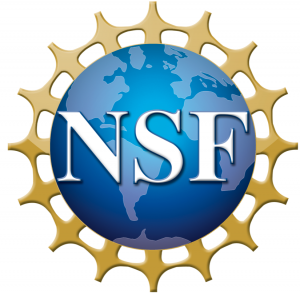
![]()

